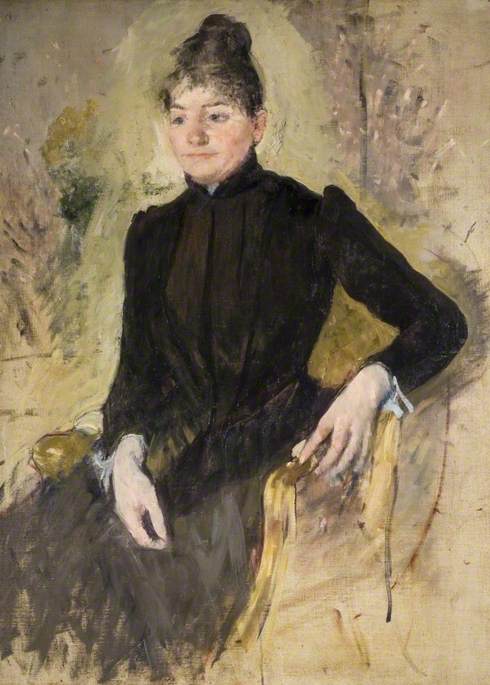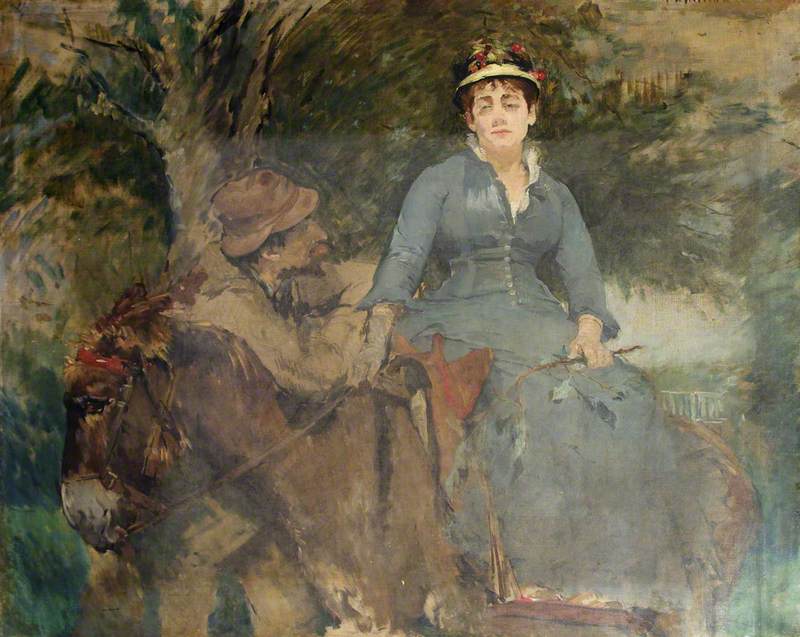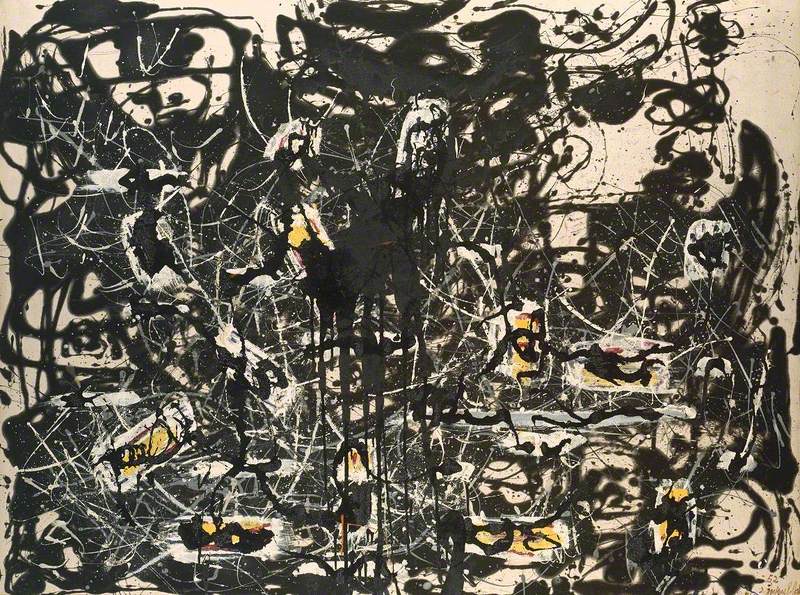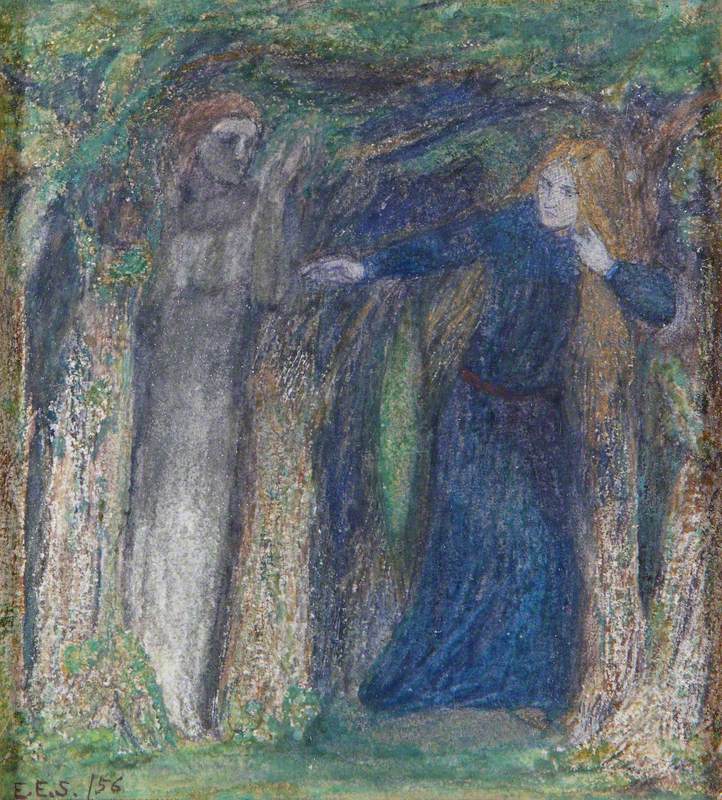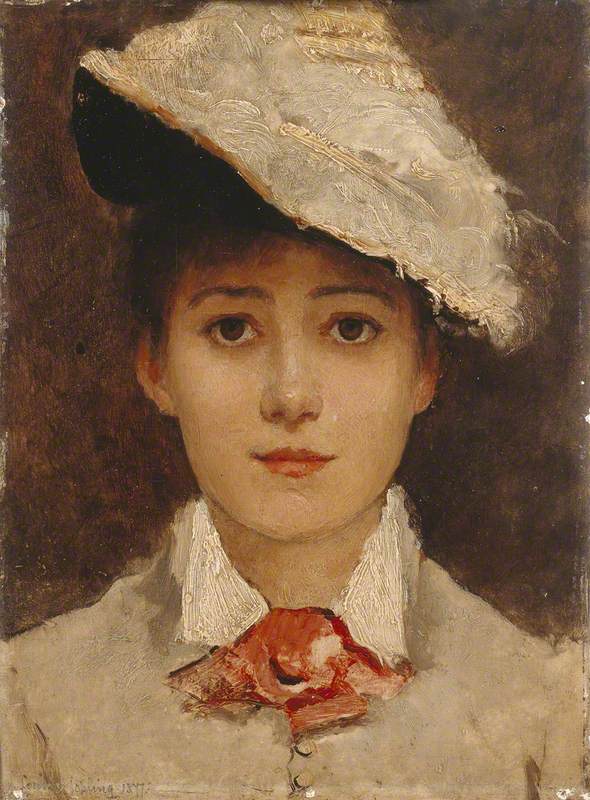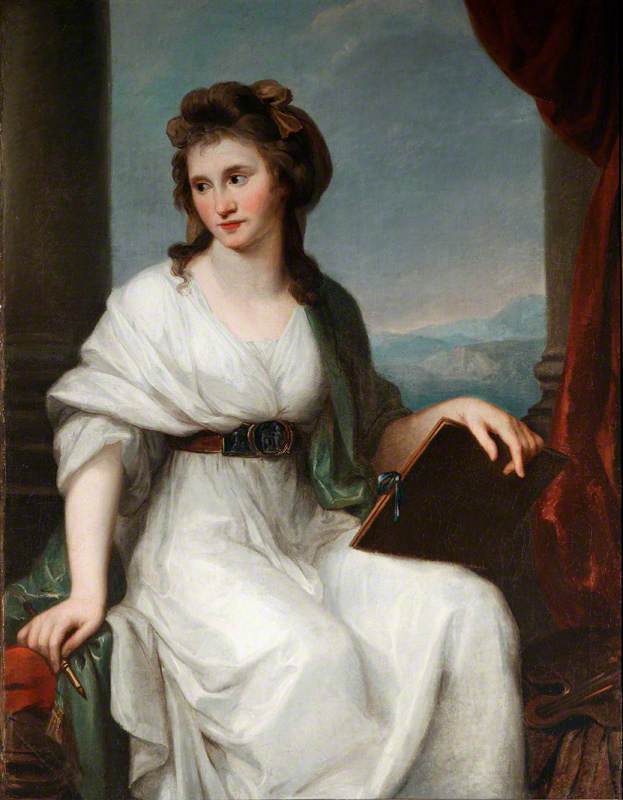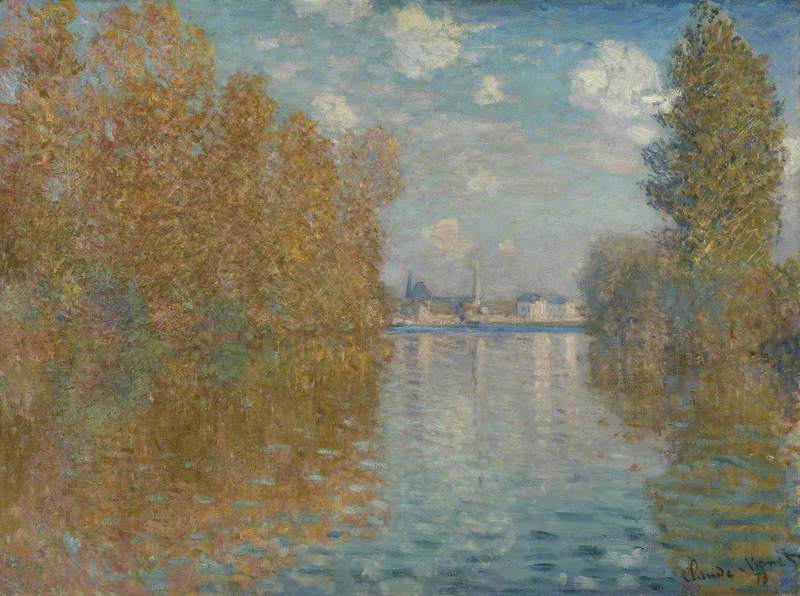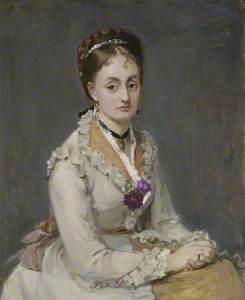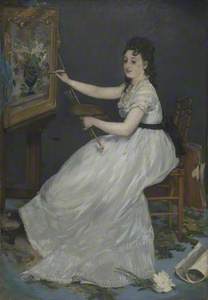In 1894 – writing in the third volume of his eight-volume magnum opus, La vie artistique – the French journalist and art critic Gustave Geffroy could not control his admiration for Berthe Morisot.
When describing her 1892 exhibition at the Parisian Durand-Ruel Gallery, he was in danger of running out of adjectives: 'there is a special atmosphere which emanates from the coloured surfaces; a lightness of a new world; a feeling of silence and light which sits on the walls; a quiet apotheosis of forms which arise in a trembling clarity.'
Geffroy was describing Morisot's first – and only – solo exhibition, held just three years before her death at the age of 54 in 1895. But fortunately, Morisot did not have to wait until her final years for the fame her art deserved.
Born in 1841 into a middle-class French family, Berthe – and her sisters, Yves and Edma – had the luxury of an artistic education. They were taught by the artist Joseph Guichard, and introduced to the works at The Louvre. Edma and Berthe showed the most talent and continued to paint together until Edma married in 1869.
But Berthe did not face the same career-ending predicament. She first exhibited in the French salon – the official exhibition of the Académie des Beaux-Arts – in 1864, when she was just 23, with her paintings Memory of the Banks of the Oise and Old Path at Auvers. In the next decade, her work was featured in no fewer than six salons – something that was quite an achievement in a period in which female artists were few and far between, especially in the salon.
Berthe Morisot Drawing, with Her Daughter (Berthe Morisot dessinant, avec sa fille)
1889
Berthe Morisot (1841–1895) 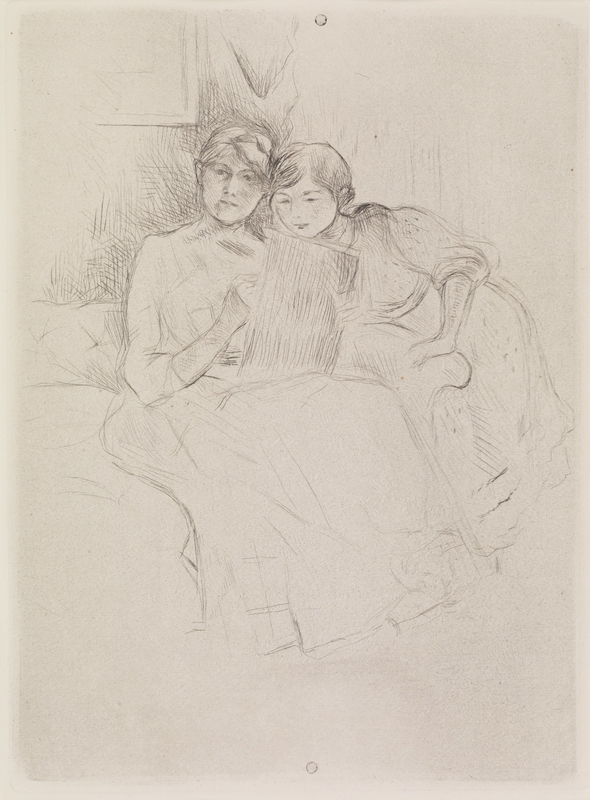
But Morisot's life was to change. She met the famed Impressionist Édouard Manet in 1868, and they had become firm friends. In 1874, she not only married his brother (and fellow, albeit unsuccessful, artist) Eugène Manet, but she also became one of the founding artists of the Impressionist movement, and one of the six artists who organised the groundbreaking first Impressionist exhibition. Indeed, Morisot would only miss one Impressionist exhibition in her lifetime, and that absence was unavoidable – she was ill following the birth of her daughter.
The first Impressionist exhibition in 1874 was a rejection of all of the middle-class stuffiness of the salon: artists like Claude Monet, Camille Pissarro, Edgar Degas and Alfred Sisley had been submitting to the selection committee for over a decade, and had not been accepted (Morisot's salon success was an outlier – and was, notably, for her earlier, less challenging works).
The exhibition the Impressionists staged in revolt was everything the salon was not – bold subjects, free brushwork and bright colours. The response from the critics and gallery-goers was, as expected, overwhelmingly negative: 'wallpaper in its early stages is much more finished than that', huffed one critic.
When we think of Impressionism now, certain paintings come to mind – Manet's A Bar at the Folies-Bergère (1882), Sisley's loosely-painted landscapes, or Monet's Impression, Sunrise (1872).
A Bar at the Folies-Bergère
1882
Édouard Manet (1832–1883) 
But despite the fact that many people have not heard of Berthe Morisot's contribution to Impressionism, her paintings have all the hallmarks of the movement – visible brushwork, intimate, everyday subjects, and a sense of vitality and life. But they also have notable, subtle differences from those created by the male artists of the period.
In place of grand landscapes, she favoured domestic scenes and gardens. And, instead of bar scenes or muses and models, her favourite subjects were her sister and daughter. One of her earliest Impressionist works, Portrait of a Woman, is of her sister Edme. Edme's frank, mournful stare reaches beyond the canvas. Her connection with the artist, her sister, is tangible.
In another painting of Edme, The Cradle (1872), the hushed tension of the nursery is unavoidable. In Morisot's depiction of her sister gazing at her infant child, there is more than a hint of sadness and regret.
Le berceau (The Cradle)
1873, oil on canvas by Berthe Morisot (1841–1895) 
Morisot continued to return to this mother and baby image throughout her life. Her commitment to realism – as seen in The Wet Nurse Feeding Julie Manet (1880) – upended centuries of idealised 'Madonna and child' imagery.
In 1881 and 1882, Morisot painted her daughter Julie with her nurse outside in their garden at Bougival. These scenes feel hazy and hot – the green of her brushwork depicts both the grass and a sultry haze. Morisot, like other Impressionists, painted outside en plein air – the sense of immediacy is palpable.
Woman and Child in a Meadow at Bougival
1882
Berthe Morisot (1841–1895) 
Morisot achieved notable success, but she was not the only female Impressionist. In 1880, critics praised only two artists at the most recent Impressionist exhibition – Berthe Morisot and the American Mary Cassatt.
Cassatt and Morisot were friends and, though their approaches to their subjects differed, they were united by a desire to paint maternity, children and domesticity.
Cassatt's painting The Young Girls (1885) has more than a passing similarity to Morisot's paintings of her daughter in the garden, but Cassatt's paintwork is more definite, more focused and less open.
There is, also, something altogether more idealised about it – despite the fact that Cassatt was not given to sentimental works, and was famed for depicting the 'New Woman' of the late nineteenth century.
Cassatt remained unmarried throughout her life, and much of her work is suffused with what we today would recognise as a distinctly feminist point of view. Whilst she often depicts mothers and nurses, she also paints women reading, playing cards or simply staring out at the viewer. In 1915 – at the age of 71 – she exhibited many of her works in a show supporting the women's suffrage movement.
Cassatt and Morisot are often grouped together as the 'grande dames' of Impressionism with a third artist, Marie Bracquemond. Bracquemond did not have the same artistic training as Cassatt and Morisot (she was born into a working-class family), but still managed to exhibit, first in the salon, and with the Impressionists from 1879 onwards.
Her career and life remain somewhat shadowy: not least, in part, because her husband Felix resented her success, and wore her down until she abandoned painting in 1890. Her works have an altogether different feel to Cassatt's and Morisot's – less intimate and emotional, and more repressed, despite their free, Impressionist style. Perhaps unsurprisingly, there is not a single one of her paintings in a UK public collection.
Le goûter (Afternoon Tea)
c.1880, oil on canvas by Marie Bracquemond (1840–1916) 
Unlike the trio of Cassatt, Morisot and Bracquemond, Eva Gonzalès never exhibited with the Impressionists. Indeed, she has more often been known as a muse than an artist. Édouard Manet's 1870 portrait of Gonzalès overshadowed her own works which were present in the salon during the same year.
Gonzalès was not much younger than Cassatt, Morisot and Bracquemond – but, in art history, she has often been seen as a different generation. Rather than being a contemporary of Manet, Monet and Sisley, she was a student. Indeed, she was the only formal student Manet ever took on.
But these labels – student, muse – deny her own artistic talent. Her not exhibiting with the Impressionists was not a case of lack of ability, but instead a decision to follow Manet's example.
Her work (other than her self-portraits, which can be seen as subtle ripostes to Manet's version of her) often featured her own family members. The unfinished painting The Donkey Ride (c.1880) shows both her sister, Eva, and her husband Henri Guérad.
The influence of Manet is visible in the woman's unidealised, downturned stare, but there is also something beyond Manet.
By 1880, Gonzalès was no longer a student, and was in the midst of exploring new subjects, techniques and artistic conundrums. Her exploration would not last long. She died in childbirth in 1883, at the age of only 34.
In contemporary exhibitions, it is all too rare to see works by Cassatt, Bracquemond and Gonzalès – despite the fact that, at the time, critics like Gustave Geffroy were keen to praise them. They deserve our attention, and their own place in art history – and not as the wife, muse or friend of the more famous men in the Impressionist movement.
Francesca Peacock, freelance writer





